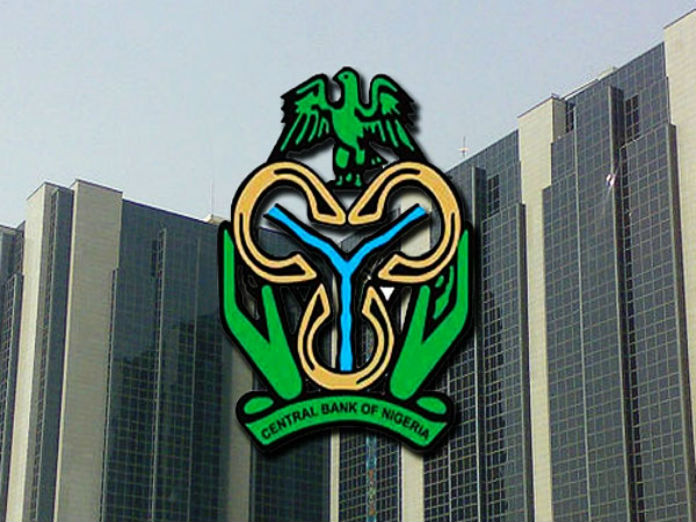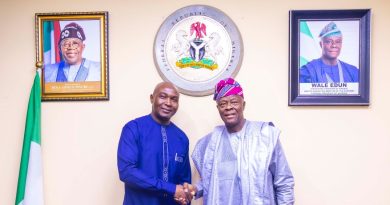MPC Holds First Meeting for 2019, Acknowledges Gradual Increase In Global Inflation
Oru Leonard,Abuja
The Monetary Policy Committee (MPC) of the Central Bank of Nigeria, CBN, held its first meeting for fiscal 2019 on 21st and 22nd January, 2019 amidst concerns over the slowdown in global economic activity, arising from on-going trade tensions, tightening global financing conditions and mounting external debt in Emerging Market and Developing Economies (EMDEs).
On the domestic front, the resurgence of moderate inflationary pressure and possible threats to accretion to external reserves due to softening crude oil prices were noted. The Eleven members of the Committee who were in attendance reviewed the developments in the global and domestic economic and financial environments in 2018, as well as the risks and outlook in the short to medium term.
The Committee noted the divergent Global Economic Developments performance of most economies in 2018 which led led to moderation in global output. In addition, a combination of factors including: financial market volatilities, trade war between the US and key allies, continuing monetary policy normalisation by the US, BREXIT, the termination of the European Central Bank’s (ECB) asset purchase program in Dec 2018 and the slowdown in the Chinese economy, further heightened uncertainties for the global economy in 2019. Consequently, global growth has been downgraded by the IMF to 3.5 per cent in 2019, from 3.7 per cent in 2018.
The Committee noted the gradual increase in global inflation, with inflationary pressures intensifying in some EMDEs who have in the recent past faced currency depreciation arising from capital flow reversals arising from progressive monetary tightening by the Federal Reserve. It is, however, expects that the recent decline in oil prices may reverse the trend, especially for oil importing economies and thus moderate currency depreciation in these countries.
The Committee also noted the continued recovery in output growth in the domestic economy after the 2016 recession as real GDP grew by 1.81 per cent in Q3 2018 from 1.50 per cent in Q2 2018. The services and agricultural sectors continued to drive output growth, contributing 1.19 and 0.56 per cent, respectively. However, the persistence of herdsmen attack on farmers, cattle rustling and flooding in some parts of the country affected agricultural and livestock output. Based on the Manufacturing and Non-Manufacturing Purchasing Managers’ Indices (PMI), output growth for Q4 2018 is expected to expand further. The expected performance projected in the PMI is attributed to continued stability in the foreign exchange market, improvements in the flow of financing resources to the real sector through the various interventions by the Bank, effective implementation of the Economic Recovery and Growth Plan (ERGP) and the increase in non-oil sector GDP. The outlook for growth, however, remains fragile as the late implementation of the 2018 budget and the residual impact of flooding and security challenges, constitute headwinds to growth.
The Committee, therefore, believes that the effective implementation of the 2018 capital budget and the ERGP, improvement in the security situation, and continued stability in the foreign exchange market will enhance aggregate demand and output growth.
On Developments in Money and Prices, the Committee noted that the broader measure of money supply, M3, grew by 16.58 per cent in 2018, above the provisional benchmark of 13.0 per cent. Broad money (M2), also grew by 12.17 per cent in December 2018 over its level at end-December 2017, in contrast to the provisional benchmark of 10.48 per cent for 2018. The increase in M2 reflected the growth in Net Foreign Assets (NFA) of 18.54 per cent in December 2018, above its provisional benchmark of 14.50 per cent. Credit to the private sector rose marginally by 12.97 per cent below its provisional benchmark of 12.40 per cent while credit to government grew by 33.77 per cent in December 2018, above its benchmark rate of 17.40 per cent.
The Committee acknowledged the strategic role of the private sector in economic growth and remained concerned over the slow growth in credit to the private sector through 2018, noting the sudden increase at end- December 2018 and noted the appreciable growth in credit to the private sector which had been a constraint to growth in the real sector and expressed optimism of further improvement in lending, through the sustained effort of the Bank to enhance credit delivery to small and medium scale industries in the economy.
The MPC, thus, commended the Management of the Bank for its efforts so far in sustaining credit delivery to the real sector of the economy and summarised with and the initiative of the Bankers Committee in addressing the phenomenon of low credit to the small and medium scale enterprises through partnering with the Nigeria Incentive- Based Risk Sharing System for Agricultural Lending (NIRSAL) to establish a national Microfinance bank with branches in all States and Local Government areas of the Federation to provide low interest rate lending to small scale businesses. A further initiative by NIRSAL with the CBN to de-risk lending to small scale enterprises is also being fine-tuned. On external borrowing, the Committee noted the increase in the debt level, advising for caution, noting that it could fast be approaching the pre-2005 Paris Club exit level.
The MPC voted to as it were since 2016 to retain the MPR at 14 percent, the asymmetric corridor of +200/-500 basis points the MPR, tge CRR at 22.5 percent, and the around Liquidity Ratio at 30 percent.




